Uncategorized
Crypto Daybook Americas: ADA Rallies, BTC Looks to Powell’s Testimony on Capitol Hill
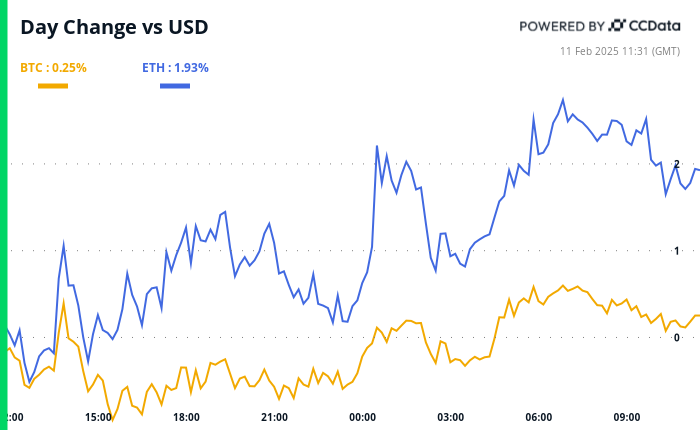
By Omkar Godbole (All times ET unless indicated otherwise)
Cardano’s ADA is trading higher, buoyed by Grayscale’s recent spot ETF application, while bitcoin (BTC) remains rangebound in a lackluster crypto market as we gear up for Federal Reserve Chair Jerome Powell’s testimony to Congress.
Powell takes the stage on Capitol Hill later Tuesday for his semi-annual update on monetary policy. He’ll start with the Senate and repeat his performance in the House of Representatives on Wednesday.
The testimony is likely to do little to revive BTC’s upswing. The consensus is that Powell will uphold his data-dependent approach, reiterating that the central bank isn’t in a rush to cut interest rates anytime soon and is keen on observing more progress with inflation.
Data shared by Bloomberg’s Lisa Abramowicz shows that market-implied inflation rates for the next two to five years have soared to their highest levels since early 2023. Meanwhile, President Donald Trump’s tariffs could underpin inflation. The CME’s FedWatch tool currently shows traders anticipate just 50 basis points in cuts by the end of next year, significantly less than the Federal Open Market Committee (FOMC) outlined in its December forecasts.
However, there’s a glimmer of hope: If the Consumer Price Index (CPI) release on Wednesday comes in weaker than expected, it could create some upside volatility.
In other news, Japanese mobile-game studio Gumi said it is planning to purchase bitcoin worth 1 billion yen ($6.6 million), following Tokyo-listed Metaplanet’s lead. Metaplanet began buying BTC last year and its shares soared a staggering 4,800% in 12 months.
Social media continues to buzz with debate over the imbalance in Ethereum’s ecosystem, where layer-2 scaling products retain most of the generated revenue while contributing only a small percentage back to the foundational layer. Solana, meanwhile, continues to outshine Ethereum and other smart-contract blockchains in decentralized exchange trading volumes and revenue.
In traditional markets, gold is taking bull breather while copper, often seen as proxy for global economic health, is trading lower, snapping a six-day winning streak. Stay alert!
What to Watch
Crypto
Feb. 13: Start of Kraken’s gradual delisting of the USDT, PYUSD, EURT, TUSD, UST stablecoins for EEA clients. The process ends March. 31.
Feb. 13: Story (IP) mainnet launch.
Feb. 14: Dynamic TAO (DTAO) network upgrade goes live on the Bittensor (TAO) mainnet.
Feb. 14, 2:30 a.m. (Estimate): Qtum (QTUM) hard fork network upgrade.
Feb. 18, 10:00 a.m.: FTX Digital Markets, the Bahamas-based subsidiary of FTX, will start reimbursing creditors.
Feb. 21: TON (The Open Network) will become the exclusive blockchain infrastructure for messaging platform Telegram’s Mini App ecosystem.
Macro
Feb. 11, 10:00 a.m.: Fed Chair Jerome Powell presents his semi-annual report to the U.S. Senate Committee on Banking, Housing, and Urban Affairs. Livestream link.
Feb. 11, 2:30 p.m.: U.S. House Financial Services Subcommittee («Digital Assets, Financial Technology, and Artificial Intelligence») hearing titled «A Golden Age of Digital Assets: Charting a Path Forward.» Witness include Jonathan Jachym, who is Kraken’s deputy general counsel. Livestream link.
Feb. 12, 8:30 a.m.: The U.S. Bureau of Labor Statistics (BLS) releases January’s Consumer Price Index (CPI) report.
Core Inflation Rate MoM Est. 0.3% vs. Prev. 0.2%
Core Inflation Rate YoY Est. 3.1% vs Prev. 3.2%
Inflation Rate MoM Est. 0.3% vs. Prev. 0.4%
Inflation Rate YoY Est. 2.9% vs. Prev. 2.9%
Feb. 12, 10:00 a.m.: Fed Chair Jerome Powell presents his semi-annual report to the U.S. House Committee on Financial Services. Livestream link.
Feb. 13, 8:30 a.m.: The U.S. Bureau of Labor Statistics (BLS) releases January’’s Producer Price Index (PPI) report.
Core PPI MoM Est. 0.3% vs. Prev. 0%
Core PPI YoY Est. 3.3% vs. Prev. 3.5%
PPI MoM Est. 0.3% vs. Prev. 0.2%
PPI YoY Prev. 3.3%
Feb. 13, 8:30 a.m.: The U.S. Department of Labor releases the Unemployment Insurance Weekly Claims report for the week ended Feb. 8.
Initial Jobless Claims Est. 216K vs. Prev. 219K
Earnings
Feb. 11: Exodus Movement (EXOD), post-market, $0.14 (2 ests.)
Feb. 11: HIVE Digital Technologies (HIVE), post-market, $-0.15
Feb. 12: Hut 8 (HUT), pre-market, $0.05
Feb. 12: IREN (IREN), post-market, $-0.01
Feb. 12: Reddit (RDDT), post-market, $0.25
Feb. 12: Robinhood Markets (HOOD), post-market, $0.41
Feb. 13: Coinbase Global (COIN), post-market, $1.89
Feb. 14: Remixpoint (TYO: 3825)
Token Events
Governance votes & calls
Aave DAO is discussing recognizing HyperLend as a friendly fork of Aave deployed on the Hyperliquid EVM chain, as well as the deployment of Aave v3 on Ink, Kraken’s layer-2 rollup network.
Sky DAO is discussing, among other things, onboarding Arbitrum One to the Spark Liquidity layer, increasing the PSM2 rate limits on Base and minting 100 million USDS worth of sUSDS into Base to accommodate growth on the network.
Morpho DAO is discussing a 25% reduction in MORPHO rewards on both Ethereum and Base after another reduction took effect on Jan. 30.
DYdX DAO is voting on the dYdX Treasury subDAO taking control over the stDYDX within the protocol’s Community Treasury and any tokens accrued through auto compounding staking rewards.
Feb. 12 2 p.m. : Render (RENDER) to host an AI Scout Discord AMA session.
Unlocks
Feb. 12: Aethir (ATH) to unlock 10.21% of circulating supply worth $23.80 million.
Feb. 14: The Sandbox (SAND) to unlock 8.4% of circulating supply worth $80.2 million.
Feb. 16: Arbitrum (ARB) to unlock 2.13% of circulating supply worth $42.93 million.
Feb. 21: Fast Token (FTN) to unlock 4.66% of circulating supply worth $78.8 million.
Token Launches
Feb. 12: Avalon (AVL) to be listed on Bybit.
Feb. 12: Game7 (G7) to be listed on Bybit, Gate.io, HashKey, MEXC, XT, and KuCoin.
Feb. 13: EthereumPoW (ETHW) and Polygon (MATIC) to no longer be supported at Deribit.
Conferences:
CoinDesk’s Consensus to take place in Hong Kong on Feb. 18-20 and in Toronto on May 14-16. Use code DAYBOOK and save 15% on passes.
Feb. 12-13: Frankfurt Digital Finance (FDF) 2025
Feb. 13-14: The 4th Edition of NFT Paris.
Feb. 18-20: Consensus Hong Kong
Feb. 19: Sui Connect: Hong Kong
Feb. 23 to March 2: ETHDenver 2025 (Denver, Colorado)
Feb. 24: RWA London Summit 2025
Feb. 25: HederaCon 2025 (Denver)
Derivatives Positioning
Litecoin’s near 10% price surge in the past 24 hours is accompanied by an 18% rise in perpetual futures open interest. HBAR, UNI have also seen notable increases in open interest, according to Velo Data.
Speaking of perpetual funding rates, SOL, SUI are seeing negative readings in a sign of bias for bearish short positions.
At 11%, ETH’s CME futures basis is greater than BTC’s, which may draw in carry traders, resulting in a strong uptake for ether spot ETFs.
BTC, ETH put skews on Deribit have eased slightly. Flows have been muted.
Market Movements:
BTC is up 0.62% from 4 p.m. ET Monday to $97,989.64 (24hrs: +0.27%)
ETH is up 0.53% at $2,702.45 (24hrs: +2.07%)
CoinDesk 20 is up 1.79% to 3,269.36 (24hrs: +1.77%)
Ether CESR Composite Staking Rate is up 8 bps to 3.05%
BTC funding rate is at 0.01% (10.95% annualized) on Binance
DXY is unchanged at 108.31
Gold is up 0.58% at $2,931.2/oz
Silver is down 0.74% to $32.15/oz
Nikkei 225 closed unchanged at 38,801.17
Hang Seng closed -1.06% at 21,294.86
FTSE is unchanged at 8,767.36
Euro Stoxx 50 is up 0.1% to 5,363.27
DJIA closed Monday +0.38% at 44,470.41
S&P 500 closed +0.67% at 6,066.44
Nasdaq closed +0.98% at 19,714.27
S&P/TSX Composite Index closed +0.85% at 25,658.9
S&P 40 Latin America closed +0.77% at 2,428.87
U.S. 10-year Treasury rate was unchanged at 4.49%
E-mini S&P 500 futures are down 0.33% to 6,068.5
E-mini Nasdaq-100 futures are down 0.47% at 21,743.5
E-mini Dow Jones Industrial Average Index futures are down 0.21% at 44,488
Bitcoin Stats:
BTC Dominance: 61.21% (-0.59%)
Ethereum to bitcoin ratio: 0.02752 (0.77%)
Hashrate (seven-day moving average): 802 EH/s
Hashprice (spot): $53.19
Total Fees: 4.58 BTC / $445,648
CME Futures Open Interest: 166,695 BTC
BTC priced in gold: 33.3 oz
BTC vs gold market cap: 9.46%
Technical Analysis
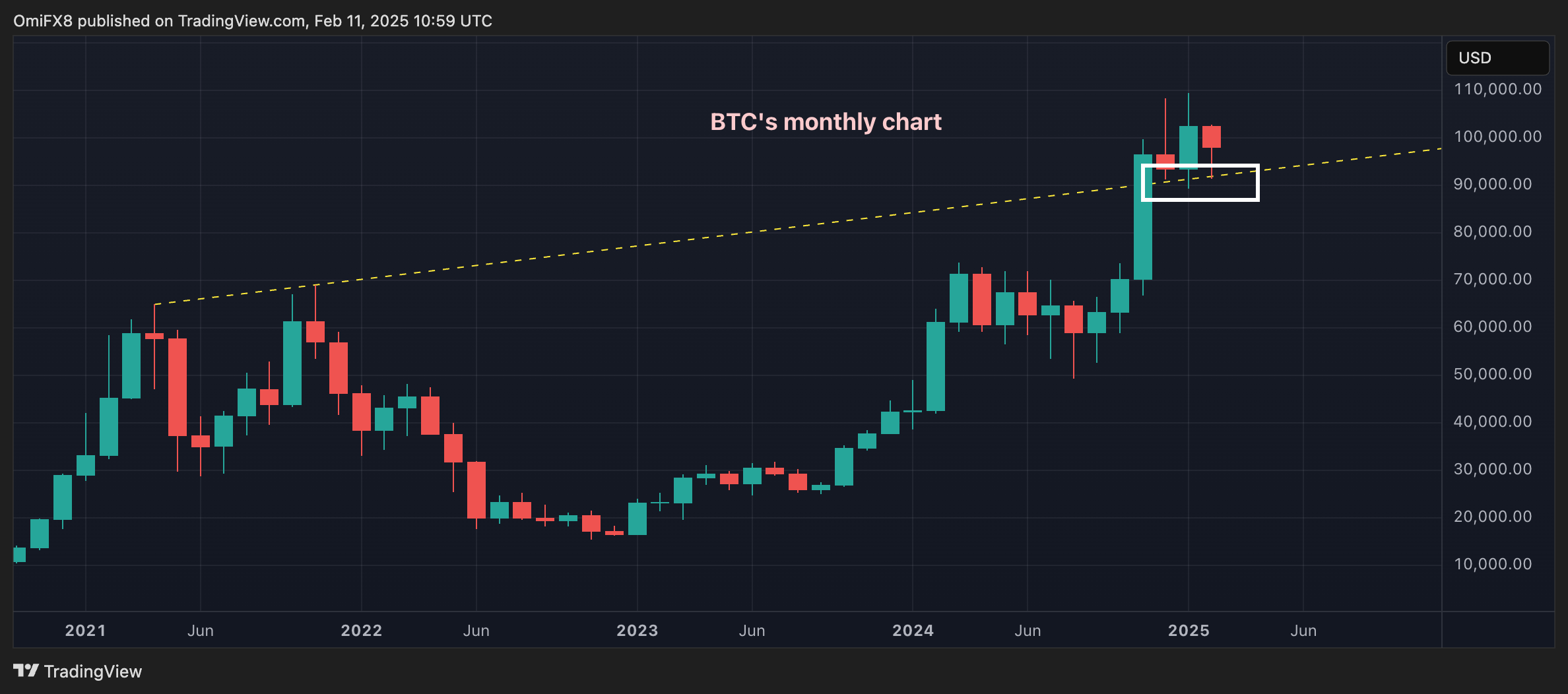
BTC’s monthly chart serves as an excellent illustration of how trendlines drawn from major price points act as support levels.
Over the past two months, the downside has consistently been capped at around $90,000. This level is defined by a trendline connecting the twin peaks from 2021.
Crypto Equities
MicroStrategy (MSTR): closed on Monday at $334.62 (+2.16%), up 0.15% at $335.11 in pre-market.
Coinbase Global (COIN): closed at $280.22 (+2.09%), up 0.23% at $280.86 in pre-market.
Galaxy Digital Holdings (GLXY): closed at C$27.24 (+1.3%)
MARA Holdings (MARA): closed at $16.76 (unchanged), up 0.36% at $16.82 in pre-market.
Riot Platforms (RIOT): closed at $11.63 (-0.1%), down 0.1% at $11.62 in pre-market.
Core Scientific (CORZ): closed at $12.82 (+2.07%), up 0.1% at $12.83 in pre-market.
CleanSpark (CLSK): closed at $11.18 (-1.32%), down 0.54% at $11.12 in pre-market.
CoinShares Valkyrie Bitcoin Miners ETF (WGMI): closed at $23.50 (+1.51%), unchanged at $23.5 in pre-market.
Semler Scientific (SMLR): closed at $49.61 (+0.83%), up 2.6% at $50.90 in pre-market.
Exodus Movement (EXOD): closed at $51.18 (+5.81%), down 2.31% at $50 in pre-market.
ETF Flows
Spot BTC ETFs:
Daily net flow: -$186.3 million
Cumulative net flows: $40.52 billion
Total BTC holdings ~ 1.177 million.
Spot ETH ETFs
Daily net flow: -$22.5 million
Cumulative net flows: $3.16 billion
Total ETH holdings ~ 3.791 million.
Source: Farside Investors
Overnight Flows
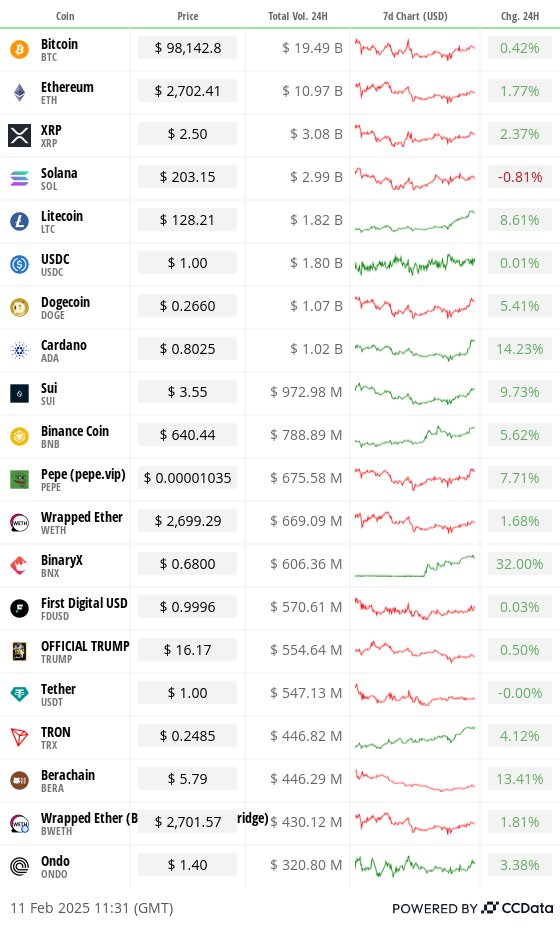
Chart of the Day
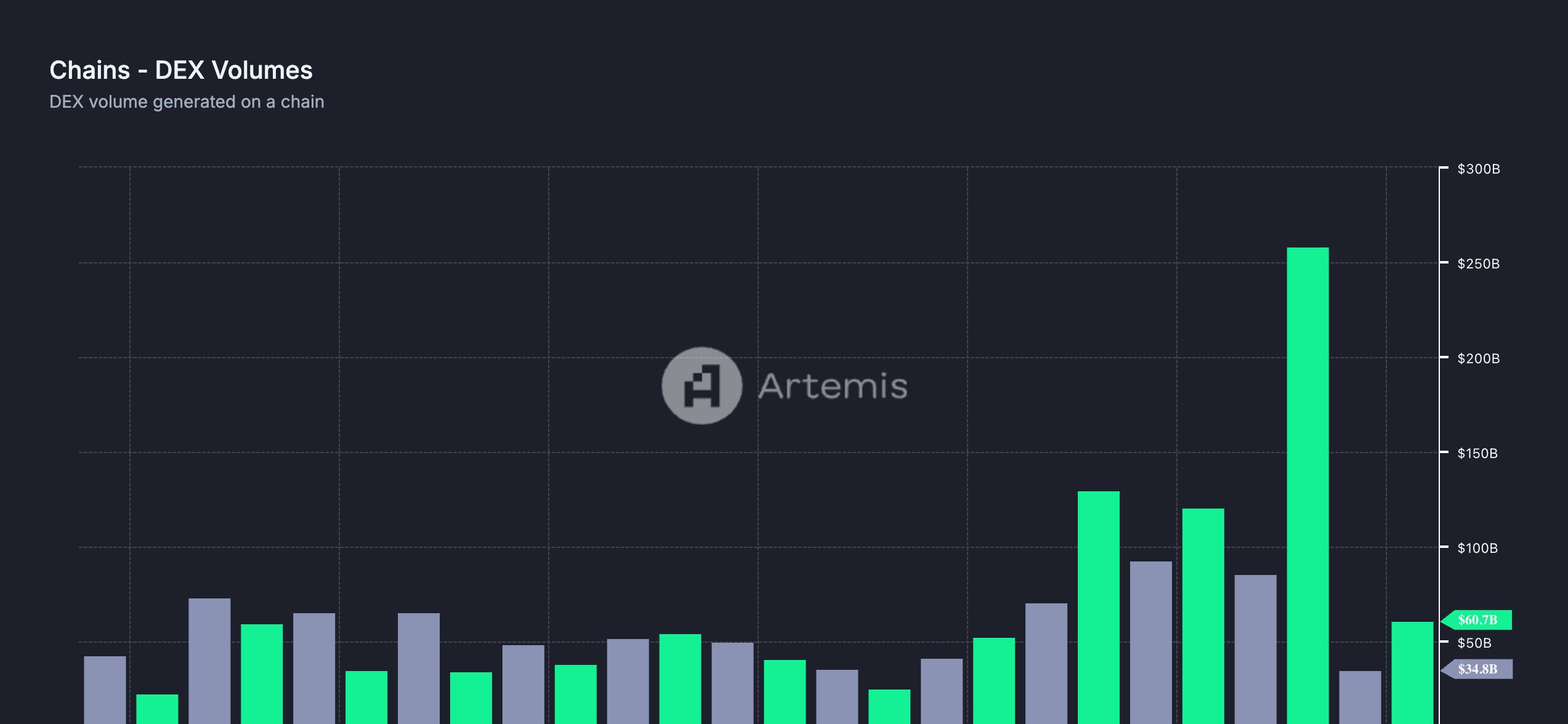
Solana-based decentralized exchanges have hosted more trading volume than Ethereum since October.
While You Were Sleeping
Ether Has Underperformed, but Total Value Locked on Ethereum Is Rising: Citi (CoinDesk): A Citi research paper says ether has underperformed bitcoin this year, despite Ethereum’s improving fundamentals, rising total value locked (TVL), continued ETF inflows and potential for crypto-friendly U.S. regulation.
Hedge Funds Are Short Ether CME Futures Like Never Before. Is It Carry Trade or Outright Bearish Bets? (CoinDesk): Hedge funds hold record ether futures shorts on CME, mainly for carry trades profiting from the difference between spot ETH ETF and ETH futures pricing. Bearish bets may also be contributing.
Trump Sets 25% Tariffs on Steel, Aluminum, Widening Trade War (Bloomberg): President Trump placed a 25% tariff on all imported steel and aluminum, effective March 12, with the aim of boosting domestic production and creating new jobs.
Chinese Companies Don’t Know Where to Put Their Cash — and It’s Sparking a Record Rise in Dividend Payouts (CNBC): Chinese companies are offering record dividends and share buybacks, encouraged by government reforms to improve shareholder returns.
UK Inflation Threat Receding, Says BoE Rate-Setter Who Voted for Big Cut (Financial Times): Catherine Mann, an external member of Bank of England’s Monetary Policy Committee, said she had voted for a 50 basis point rate cut last week, citing reduced inflationary pressures.
WazirX Offers 85% of Stolen User Funds as Rebalancing Ends (CoinDesk): Indian crypto exchange WazirX, hacked last year, hopes to start initial fund distribution in April, aiming to return 85% of the dollar value of users’ crypto holdings, with more to come later.
In the Ether
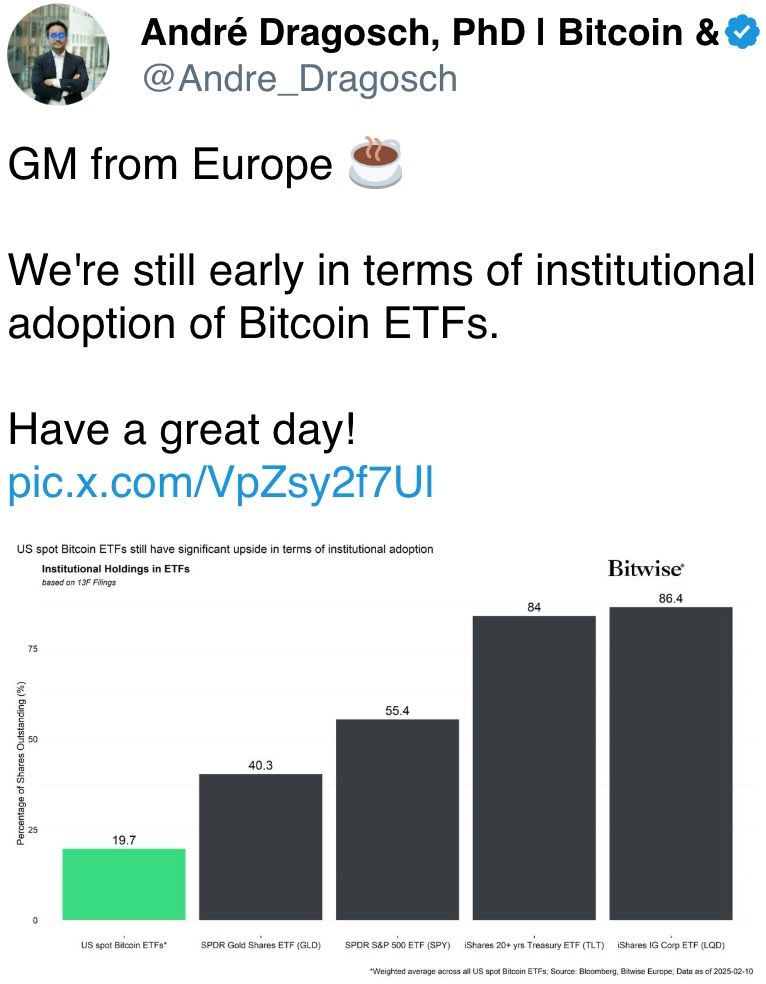
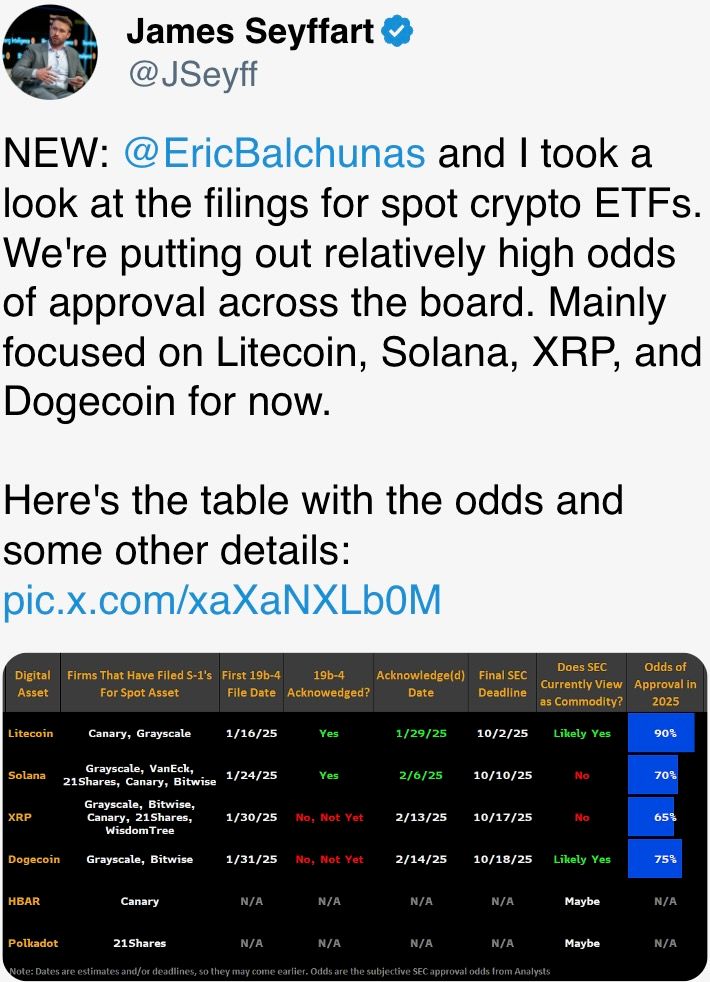



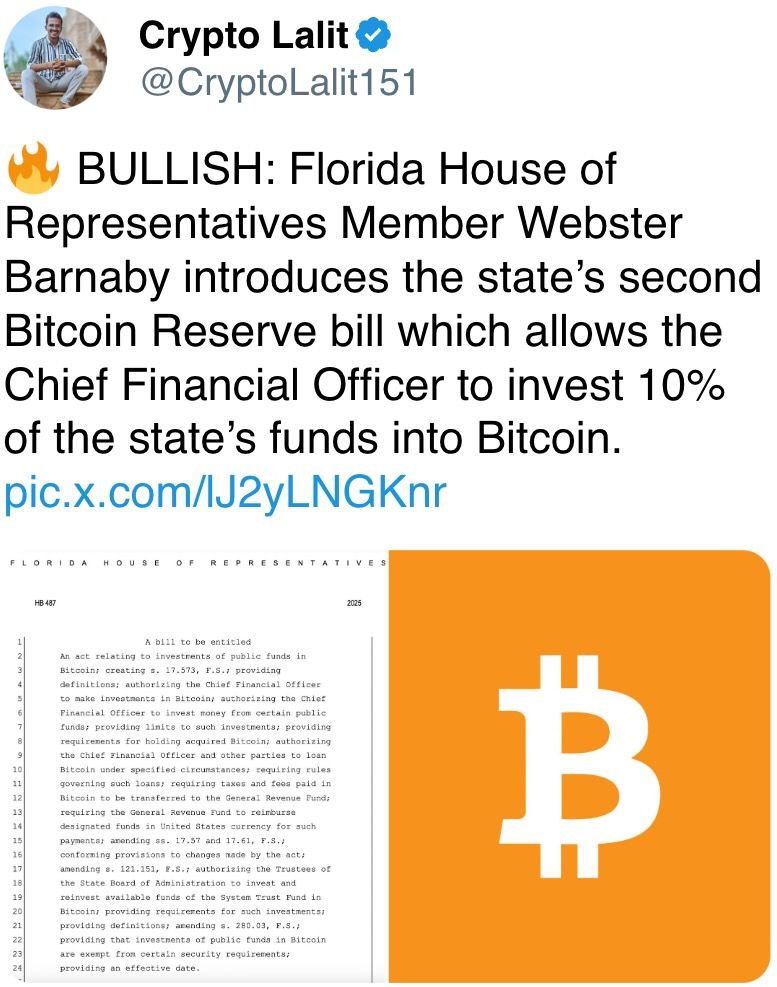
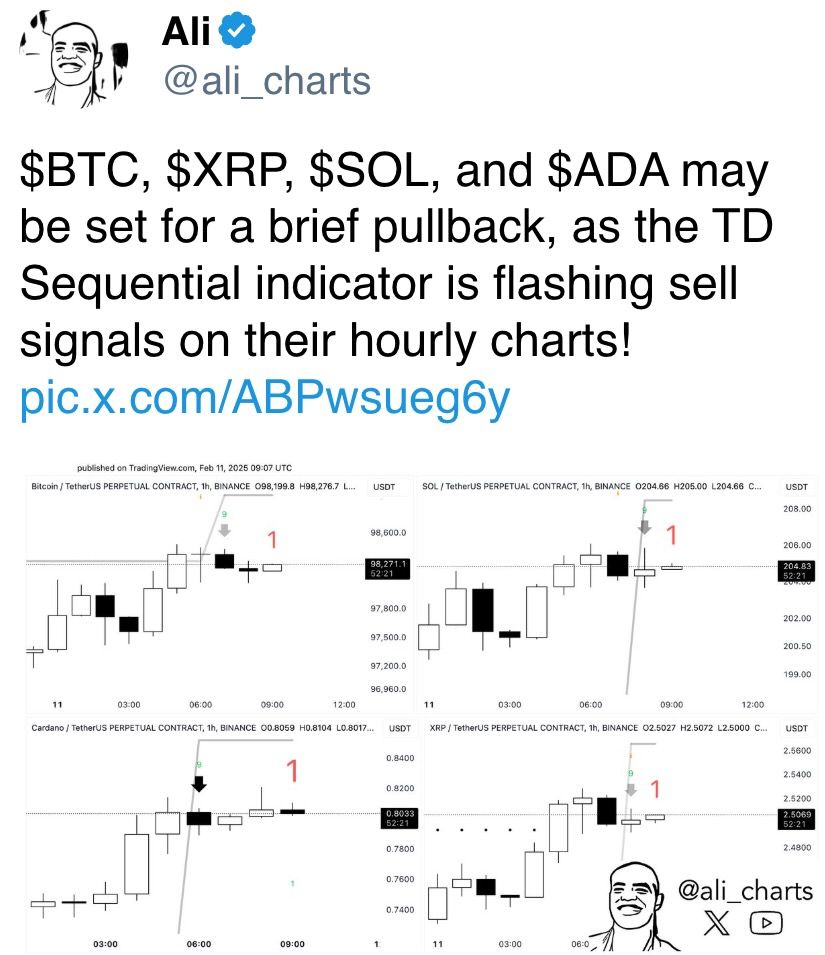
Uncategorized
Memecoins Under Pressure as SHIB, Dogecoin Slide After Shibarium Loses $2.4M in Hack

Top meme tokens traded under pressure as a multimillion dollar hack of Shiba Inu’s layer-2 network, Shibarium, dented investor confidence in joke cryptocurrencies.
On Sunday, Shibarium fell victim to a flash loan attack on its validator system, which drained about $2.4 million in ether (ETH) and SHIB. The CoinDesk Memecoin Index has dropped 6.6% in the past 24 hours. The broader market CoinDesk 20 Index (CD20) is down just 2.3%.
The attacker borrowed 4.6 million BONE, the governance token for the Shiba Inu ecosystem, often linked to the decentralized exchange (DEX) ShibaSwap, through a flash loan to gain control of the majority of validator keys. The keys act as gatekeepers of the network, confirming transactions and ensuring security.
With that control, the attacker was able to game the system into approving unauthorized transactions and walk away with a large amount of crypto assets from the bridge that connects Shibarium with the Ethereum blockchain. The process is akin to someone temporarily taking over a bank’s security system to approve unauthorized withdrawals. A flash loan is a loan raised with no upfront collateral and returns the borrowed assets within the same blockchain transaction.
The Shiba inu team was able to prevent a bigger, more serious breach because the BONE tokens used to gain control were reportedly tied to validator 1 and remained locked by the staking rules.
Nevertheless, markets reacted negatively breach, which again underscores the perennial security issues with blockchain technology.
Memecoins drop, broader market bid
SHIB fell by the most in three weeks on Sunday (UTC), losing 4% $0.00001369, and has continued to weaken to trade recently at $0.00001359. The cryptocurrency experienced considerable volatility throughout the 23-hour trading window ended Sept. 15 at 02:00 UTC, with the aggregate range encompassing $0.000006191, a 4% oscillation from peak to trough.
The session commenced with pre-dawn fragility as SHIB retreated from $0.000014156 to establish a pivotal trough of $0.000013547 at 14:00 UTC. Volume of 1.064 trillion tokens surpassed the 24-hour mean, signaling robust distribution pressure and prospective capitulation, according to CoinDesk Research’s technical analysis model.
The BONE token, which initially doubled to over 36 cents, is now down over 2% on a 24-hour basis, trading at around 20 cents.
According to the technical analysis model:
- SHIB established a critical underpinning at $0.000013547 during elevated volume selling pressure exceeding 1.064 trillion tokens.
- The token constructed successive higher lows and consolidation parameters between $0.000013600-$0.000013780.
- Recovery momentum is demonstrated by ascending channel formations with sustained higher lows, indicating potential continuation towards the $0.000014000 resistance.
- Volume patterns exceeded 24-hour averages during the decline phase, confirming potential capitulation levels.
- Terminal hour trading exhibited decisive upward momentum with 1% appreciation, confirming a breach above the resistance threshold.
Large DOGE transfers add to bearish sentiment
Meanwhile, SHIB’s peer dogecoin (DOGE) fell 4% to 27.80 cents on Sunday and has since lost further 5% to 27.36 cents, according CoinDesk data.
A massive transfer of DOGE to a centralized exchange likely added to the bearish mood in the market. According to Whale Alert, crypto exchange OKX received 119,306,143 DOGE, worth over $34 million, from an unknown wallet. Such large transfers are typically associated with an intention to liquidate holdings.
Uncategorized
Fed Rate Decision, MKR-SKY Conversion Deadline: Crypto Week Ahead

The U.S. Federal Reserve is likely to dominate markets, both crypto and traditional, in the coming week. Traders are positioned for a rate cut of at least 25 basis points when the Fed announces its decision on Sept. 17, according to CME’s Fedwatch tool.
What to Watch
- Crypto
- Sept. 16, 12 p.m. ET: Solana AMA on X.
- Sept. 18: Mavryk Network launches its mainnet and native MVRK token.
- Sept. 18: Rex-Osprey Dogecoin ETF expected to begin trading on Cboe BZX Exchange under ticker DOJE.
- Sept. 18: Unipoly Chain (UNP) mainnet launch.
- Macro
- Sept. 16: Brazil July unemployment rate Est. N/A (Prev. 5.8%).
- Sept. 16: Canada August headline CPI YoY Est. N/A (Prev. 1.7%), MoM Est. N/A (Prev. 0.3%); core YoY Est. N/A (Prev. 2.6%), MoM Est. N/A (Prev. 0.1%).
- Sept. 16: U.K. July unemployment rate Est. 4.7%.
- Sept. 17: U.K. August headline CPI YoY Est. 3.9%. MoM Est. N/A (Prev. 0.1%); core YoY Est. 3.7%, MoM Est. N/A (Prev. 0.2%).
- Sept. 17: Canada benchmark interest rate Est. N/A (Prev. 2.75%) followed by a press conference.
- Sept. 17: The Fed’s FOMC decision on U.S. interest rates. Est: 25 bps cut to 4.00%-4.25% followed by a press conference.
- Sept. 17: Brazil benchmark interest rate Est. N/A (Prev. 15%).
- Sept. 18: Bank of England decision on U.K. interest rates. Est: unchanged at 4%.
- Sept. 19: Bank of Japan interest-rate decision. Est: unchanged at 0.5%.
- Earnings (Estimates based on FactSet data)
- Sept. 18: Lite Strategy (MEIP), pre-market
Token Events
- Governance votes & calls
- Curve DAO is voting to changes to donation-enabled Twocrypto contracts. Voting ends Sept. 16.
- Sept. 16: Aster Network to host a community call.
- MantleDAO is voting on keeping the 2025-2026 budget at $52 million USDc and 200 million MNT. Voting ends Sept. 18
- Sept. 18, 6 a.m.: Mantle to host Mantle State of Mind, a monthly townhall series.
- Sept. 16, 12 p.m.:Kava to host a community Ask Me Anything (AMA) session.
- Sept. 23: SwissBorg to make a live announcement.
- Unlocks
- Sept. 15: Starknet (STRK) to unlock 5.98% of its circulating supply worth $17.09 million.
- Sept. 15: Sei (SEI) to unlock 1.18% of its circulating supply worth $18.06 million.
- Sept. 16: Arbitrum (ARB) to unlock 2.03% of its circulating supply worth $48.16 million.
- Sept. 17: ZKsync (ZK) to unlock 3.61% of its circulating supply worth $10.54 million.
- Sept. 18: Fasttoken (FTN) to unlock 2.08% of its circulating supply worth $89.8 million
- Sept. 20: Velo (VELO) to unlock 13.63% of its circulating supply worth $43.39 million.
- Sept. 20: KAITO (KAITO) to unlock 3.15% of its circulating supply worth $10.1 million.
- Token Launches
- Sept. 15: OpenLedger (OPENLEDGER) to be listed on Crypto.com.
- Sept. 18: Deadline to convert MKR to SKY before the delayed upgrade penalty takes effect.
- Sept. 20: Reserve Rights (RSR) to conduct a token burn.
- Sept. 22: Falcon Finance to host community sale on Buidlpad.
Conferences
- Sept.12-15: ETHTokyo 2025 (Tokyo, Japan)
- Sept. 15: TGE Summit 2025 (New York)
- Sept. 15-21: Budapest Blockchain Week 2025 (Budapest, Hungary)
- Sept. 16-17: Real-World Asset Summit (New York)
- Sept. 17: The Bitcoin Treasuries NYC Unconference (New York)
- Sept. 17-19: AIBC 2025 (Tokyo, Japan)
- Sept. 18: CBC Summit USA (Washington)
- Sept. 19: DEF-AI 2025 (Tblisi, Georgia)
- Sept. 17-20: Nomad Capitalist Live 2025 (Kuala Lumpur, Malaysia)
- Sept. 21: XRP Seoul 2025 (Seoul, South Korea)
Uncategorized
Bank of England’s Proposed Stablecoin Ownership Limits are Unworkable, Says Crypto Group

The Financial Times (FT) reported on Monday that cryptocurrency groups are urging the Bank of England (BoE) to scrap proposals limiting the amount of stablecoins individuals and businesses can own.
The group warned that the rules would leave the UK with stricter oversight than the U.S. or the European Union (EU).
According to the FT, BoE officials plan to impose caps of 10,000 british pounds to 20,000 british pounds ($13,600–$27,200) for individuals and about 10 million british pounds ($13.6 million) for businesses on all systemic stablecoins, defined as tokens already widely used for payments in the U.K. or expected to be in the future.
The central bank has argued the restrictions are needed to prevent outflows of deposits from banks that could weaken credit provision and financial stability.
The FT cited Sasha Mills, the BoE’s executive director for financial market infrastructure, as saying the limits would mitigate risks from sudden deposit withdrawals and the scaling of new systemic payment systems.
However, industry executives told the FT the plan is unworkable.
Tom Duff Gordon, Coinbase’s vice president of international policy, said “imposing caps on stablecoins is bad for U.K. savers, bad for the City and bad for sterling,” adding that no other major jurisdiction has imposed such limits.
Simon Jennings of the UK cryptoasset business council said enforcement would be nearly impossible without new systems such as digital IDs. Riccardo Tordera-Ricchi of The Payments Association told the FT that limits “make no sense” because there are no caps on cash or bank accounts.
The U.S. enacted the GENIUS Act in July, which establishes a federal framework for payment stablecoins. The law sets licensing, reserve and redemption standards for issuers, with no caps on individual holdings. The European Union has also moved ahead with its Markets in Crypto-Assets Regulation (MiCA), which is now fully in effect across the bloc.
Stablecoin-specific rules for asset-referenced and e-money tokens took effect on June 30, 2024, followed by broader provisions for crypto-assets and service providers on Dec. 30, 2024. Like the U.S. approach, MiCA does not cap holdings, instead focusing on reserves, governance and oversight by national regulators.
-

 Business11 месяцев ago
Business11 месяцев ago3 Ways to make your business presentation more relatable
-

 Fashion11 месяцев ago
Fashion11 месяцев agoAccording to Dior Couture, this taboo fashion accessory is back
-

 Entertainment11 месяцев ago
Entertainment11 месяцев ago10 Artists who retired from music and made a comeback
-

 Entertainment11 месяцев ago
Entertainment11 месяцев ago\’Better Call Saul\’ has been renewed for a fourth season
-

 Entertainment11 месяцев ago
Entertainment11 месяцев agoNew Season 8 Walking Dead trailer flashes forward in time
-

 Business11 месяцев ago
Business11 месяцев ago15 Habits that could be hurting your business relationships
-

 Entertainment11 месяцев ago
Entertainment11 месяцев agoMeet Superman\’s grandfather in new trailer for Krypton
-

 Entertainment11 месяцев ago
Entertainment11 месяцев agoDisney\’s live-action Aladdin finally finds its stars





